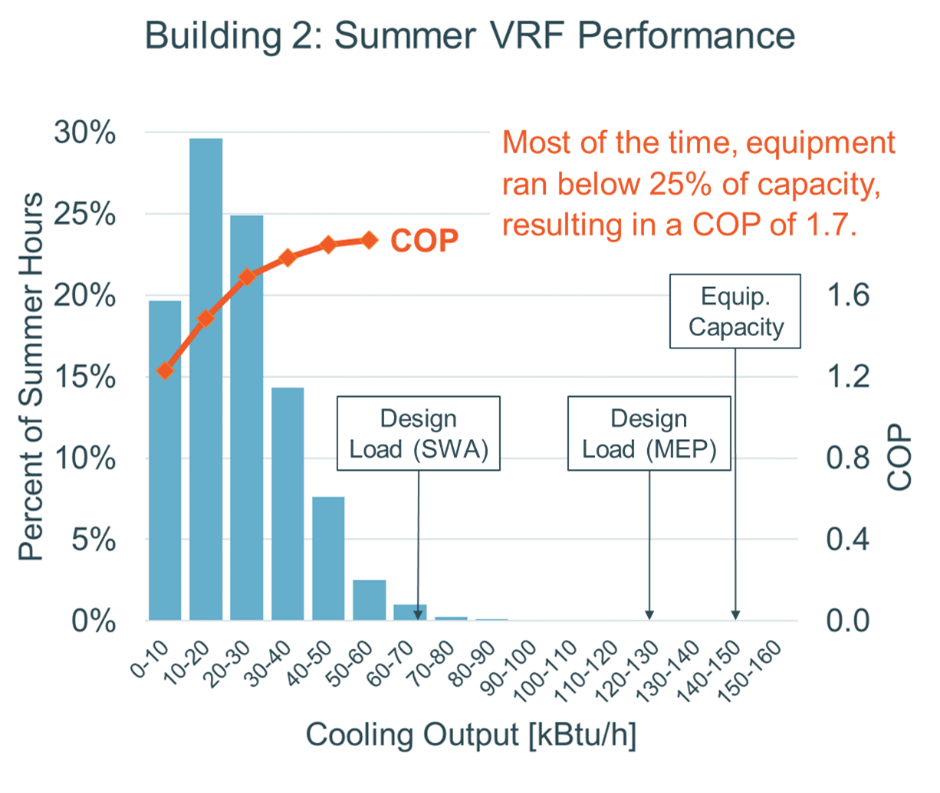

Research & Programs
In a DOE-sponsored study, SWA uncovered why one VRF system used six times less electricity per square foot than another across two similar high-rise apartment buildings in New York City.

In a DOE-sponsored study, SWA monitored VRF systems in two new high-rise apartment buildings in New York City:
During the summer of 2023, the VRF systems in Building 1 used six times less electricity per sq.ft. than Building 2. While Building 1 has a more efficient enclosure, this cannot explain the discrepancy in cooling electricity. Instead, proper VRF sizing seems to be the key difference.
Oversizing starts with poor design load calculations. SWA reproduced room-by-room design loads1 for both buildings. In Building 1, SWA’s cooling loads matched the MEP designer’s loads remarkably well. In Building 2, the MEP designers’ loads were 70-75% higher than SWA’s calculated loads.2
Designers for Building 1 specified VRF cooling capacity3 roughly 10% lower than the sum of all apartment design loads to account for diversity: not all apartments experience peak cooling at the same time.
In Building 2, on the other hand, designers specified capacity 33% higher than the already inflated loads.

At Building 2, SWA measured heating and cooling output as well as COP for three VRF systems.4 The maximum cooling output was very close to SWA’s calculated peak loads – indicating our load calculation method was sound.
Cooling output was much less than the designer’s predicted peak loads. In fact, the maximum cooling output was less than half of the designer’s loads for 99.8% of the summer. These inflated design loads just don’t match real world conditions.
Unfortunately, SWA couldn’t get cooling output for Building 1, but we did get electricity use. The cooling electricity was six times lower in Building 1 – where systems were right sized.5

HVAC designers understandably want to provide ample heating and cooling capacity. But this conservative approach has real world costs. Bigger equipment obviously costs more; in Building 2, the VRF manufacturer said proper sizing would have saved 24% in equipment costs.
Oversizing also hits efficiency. VRF systems are only “variable” to a point. When these particular systems run below 33% of max capacity COP drops dramatically, and these systems were almost always below this point.
See the full research report at https://docs.nrel.gov/docs/fy25osti/89805.pdf.
1Peak cooling loads were higher than heating loads for both buildings. SWA used ASHRAE residential load factor methods from 2017 Handbook of Fundamentals.
2The biggest discrepancy was internal gains.
3Outdoor unit capacity at design conditions.
4SWA was unable to measure output (and therefore COP) at Building 1 due to system configuration. COP values do not include electricity used by indoor units.
5Cooling electricity normalized per apartment floor area